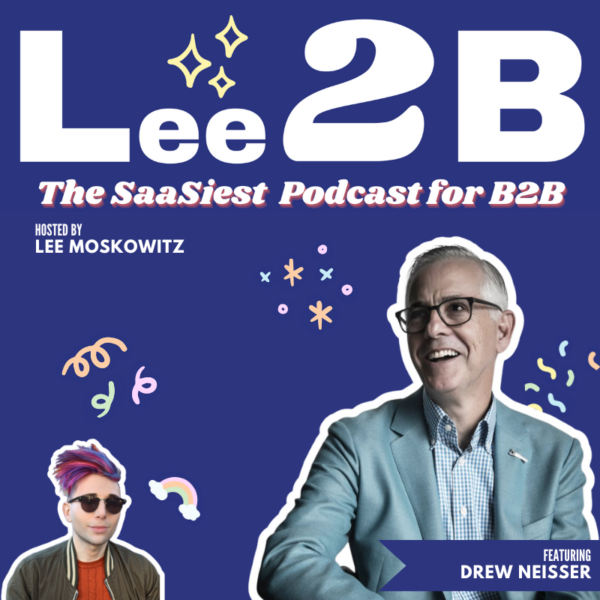
Why B2B Marketing Broke in 2024 - And How to Fix It
In a revealing conversation on the Lee2B Marketing podcast, Drew Neisser sat down with host Lee Moskowitz to discuss the state of B2B marketing, the changing role of CMOs, and why marketing needs a fundamental reset in 2025. The wide-ranging discussion offered fresh perspectives on everything from community building to the core challenges facing modern B2B marketers.
Learning from Penguins: The Power of Community
The discussion kicked off with an unexpected parallel between penguins and B2B marketers. As Neisser explained, both thrive through collaboration: "When you get 6,000 emperor penguins together in the middle of the winter in Antarctica... [there's a] 70 degree difference between inside and outside the huddle." This observation inspired CMO Huddles, his community for marketing leaders launched in 2020.
The power of community isn't just theoretical. Neisser shared a recent example: "I got an email at three in the morning... from a CMO who had an urgent request. I could send out notes to five CMOs who I solved that problem. Got that information back and how they were handling the same problem, got that back to the CMO. And it was like, 'Oh my God, you're awesome.'"
The Crisis in B2B Marketing
When asked directly if B2B marketing broke in 2024, Neisser didn't hesitate: "Yes, it did. We saw epic churn rates of CMOs. We saw deal cycles lengthen. We saw win rates decline." The traditional approach of building tech stacks and focusing solely on demand generation simply stopped working.
The solution? Neisser advocates for a complete reset: "Step back... tear up that plan. Look at your tech stack and say, am I spending more than 10 percent on tech? Rip out all the stuff that you're not using."
Reframing the Brand Conversation
One of the most interesting insights from the conversation was Neisser's approach to the increasingly controversial term "brand." He suggests replacing it with "reputation" - something everyone inherently understands. As he puts it, "Reputation equals pricing power equals business value."
To illustrate this point, Neisser shared a cautionary tale about Nike: "Nike killed their business. They lost like 40 billion in market value. Because they thought, 'Oh, let's act more like a B2B company.'" The lesson? "You can't take brand for granted. You can destroy brand as quickly as you can build it."
The Evolution of the CMO Role
The conversation revealed how the CMO role has become increasingly complex. Neisser described it as "the most bespoke role in the C-suite," noting that unlike other C-suite positions, a CMO's responsibilities can vary dramatically from company to company.
"You could take a CFO at almost any company, you can put that CFO in another thing and their books are going to look the same," Neisser explained. "They've got assets and they got liabilities." But for CMOs, the role might include everything from SDRs and BDRs to customer experience and product marketing.
His advice for current and aspiring CMOs? "The magic moment for a CMO is when the organization sees them as a business leader first, a marketer second."
The CATS Framework for Marketing Leadership
Neisser introduced his CATS framework - Courage, Artfulness, Thoughtfulness, and Scientific - for successful marketing leadership. Of these, he noted that the scientific aspect often proves most challenging: "In a B2B enterprise sale with a 12-month cycle and 10 people on the buying committee, 10 touches per person... that's a hundred touches. Which of those touches mattered the most?"
Putting Market Back in Marketing
A crucial theme throughout the conversation was the importance of truly understanding your market. As Moskowitz noted, "Marketing to me... it's not just sending out ideas that you think are cool and will work. It's really doing all that listening, figuring out how they talk, what your ICP cares about."
Neisser added that market insight carries unique weight in the boardroom: "If you want to turn heads in a boardroom, the best way to do that is to start a sentence with, 'I was talking to the customer the other day.'"
Looking Forward
The interview concluded with practical steps for marketing leaders in 2025. Neisser emphasized the importance of:
- Reducing technology spend to essential tools
- Developing clear, purpose-driven brand statements
- Building everything from customer insights
- Ensuring employee buy-in before external execution
- Setting aside 10% of budget for experimentation
Perhaps most importantly, Neisser advocated for a thoughtful approach to marketing that prioritizes employees first, then customers, and finally prospects - a significant shift from the traditional B2B focus on net new logos.
The full interview, available on the Lee2B Marketing podcast, covered additional ground, including insights from Neisser's book "Renegade Marketing: 12 Steps to Building Unbeatable B2B Brands." For marketing leaders looking to navigate the challenges of 2025, it offers a valuable roadmap for success in an increasingly complex B2B landscape.